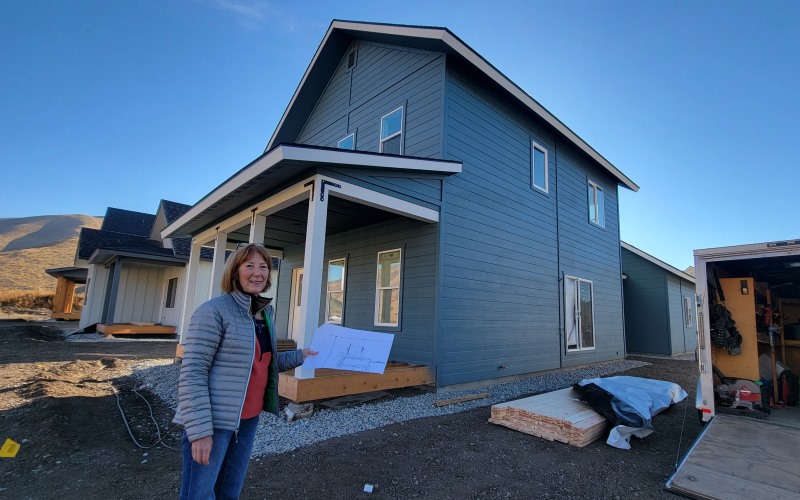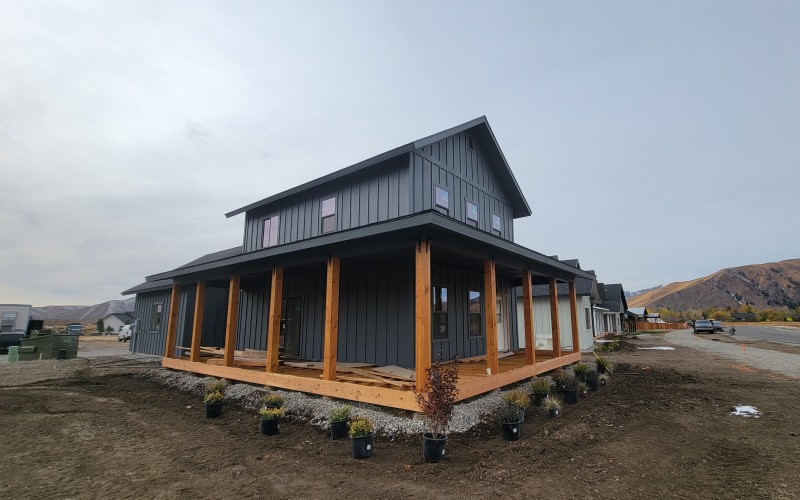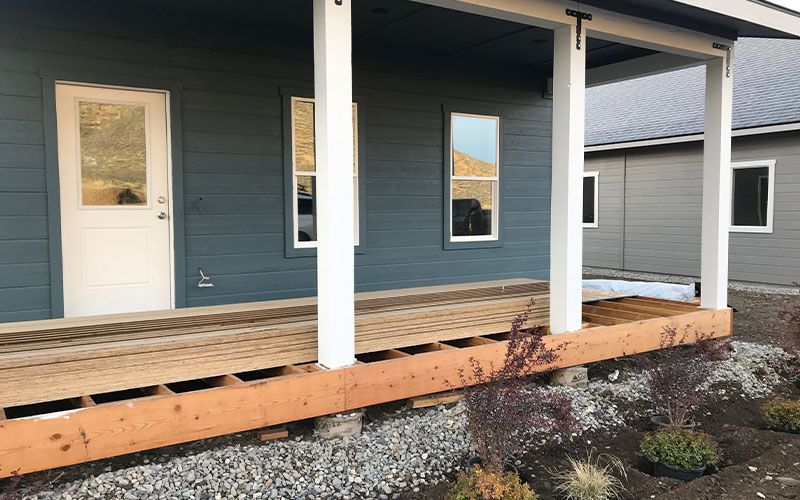|
STORY AND PHOTOS BY KAREN BOSSICK Kaye Kearns gestured toward a bed of dirt as she envisioned a home for a few dozen shrubs that sat nearby shivering on a recent frosty morning. “The soil is everything so we have to get down really deep,” she told Mauro, the manager of Zavala Landscaping, explaining how the beds needed to be 18 inches deep. Kearns was part of a team from St. Thomas Episcopal Church that had offered to landscape four new affordable rental homes destined for hospital staff at St. Luke’s Wood River. The four homes in the new Quigley Farm neighborhood are a project of ARCH Community Housing Trust, St. Luke’s Health System and St. Luke’s Wood River Foundation.
|
|

Landscaper architect Carolyn Coiner holds the landscaping plans in her hand.
|
|
|
Eight additional units for hospital workers and their families are being built in Hailey’s Woodside neighborhood and Bellevue Kearns, a master gardener, and retired landscape architect Carolyn Coiner had designed the landscaping plan for the Quigley Farm homes, staggering the shrubs in their beds. Then the church’s Housing Outreach Subcommittee under the direction of Art Dahl had ordered plants from Hollyberry Nursery in Kimberly. Originally, the committee had hoped to install the landscaping in early September when the homes’ new residents hoped to move in. But construction delays postponed the move-in date—the new residents are still waiting for Intermountain Gas Co. to provide gas so they can move in. And that postponement meant the landscaping committee didn’t get the shrubs planted until the day before snow blanketed Hailey.
|
|

The shrubs and grasses await planting.
|
|
|
Kearns and Coiner selected a variety of shrubs, including Northern Lights Tufted Hair Grass; Glow Girl Spirea, a winter hardy plant that can withstand summer’s heat; maroon-colored Bert Rose Barberry, and Gold Flame Spirea, with bronze-tinges. Then they enlisted the help of a neighbor to water the plants while they awaited planting. The church contributed $11,000 to the project, including the purchase of the plants and actual planting. “Originally we had planned on doing the planting ourselves, but it worked out better to have Zavala do it,” said Wendy Jaquet, who was in charge of making sure all the pieces came together. “We wanted to do what we could to assist efforts to provide affordable housing for hospital workers.”
|
|

The team hoped that the planting would make the homes welcoming and tie them together.
|
|
|
The project involved laying down a weed barrier in the bed, covering the plants with 19 cubic yards of planting mix, installing plant edging around the beds and placing drip irrigation around the plants. Crushed rock around the bed will catch snowmelt from the roof, and low-maintenance artificial turf in the yard will cut down the need for irrigation. “We emphasized low-maintenance drought-tolerant plants with color,” said Kearns. “Something to tie the landscape together, tie the houses together. We wanted something that would be welcoming.” Coiner said she enjoyed being part of the project: “It’s been fun and it feels wonderful to be part of helping to solve one of the biggest issues in the community, which is affordable housing.”
|
|

The plants were originally to have been covered with a rock mulch but the team switched to a plant mulch after learning that gravel was being placed under the roof to catch snow melt. PHOTO: Wendy Jaquet
|
|
|
|